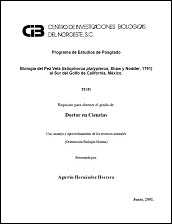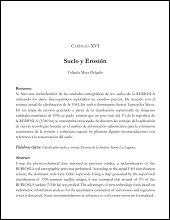Ingresos y descargas de cobre, zinc, cadmio y plomo en la sección de maternidad de un laboratorio de producción comercial de postlarvas de camarón
Copper, zinc, cadmium and lead inputs and outputs in the maternity section of a commercial shrimp hatchery
Autor
ROSALBA NAYELY PEREA JUAREZ
MARTIN GABRIEL FRIAS ESPERICUETA
FEDERICO PAEZ OSUNA
DOMENICO VOLTOLINA LOBINA
Metadatos
Mostrar el registro completo del ítemResumen
"El objetivo de este estudio fue determinar las cantidades de cobre, zinc, cadmio y plomo que entran a los estanques de la sección de maternidad en un laboratorio comercial de producción de postlarvas en México, así como aquéllas descargadas al ambiente. Los principales ingresos de Cu fueron los productos químicos usados en el tratamiento y prevención de enfermedades, alimentos y metal disuelto en el agua que ingresa. Los sólidos suspendidos y los alimentos fueron los dos principales ingresos de Zn, mientras que los alimentos y los productos químicos de los tratamientos fueron los principales ingresos de Pb y Cd. La mayoría de las concentraciones de metales pueden ser consideradas como seguras para la producción de postlarvas de camarón, pero las concentraciones de Cd de tres dietas formuladas estuvieron cercanas y por encima de los niveles de seguridad. La producción anual de este laboratorio en el 2013 fue aproximadamente 1,3x109 post-larvas, y la descarga estimada de metales al ambiente por la sección de maternidad fue de 351 g de Cu, 1,190 g de Zn y 1,35 y 0,02 de Pb y Cd, respectivamente, que es comparable a la cantidad de Cd y Pb usados para fertilizar entre 1,5 y 0,5 hectárea de la superficie agrícola del Estado de Sinaloa." "The aim of this work was to determine the amounts of copper, zinc, cadmium and lead which enter the tanks of the maternity section of a Mexican commercial hatchery, and those that are discharged to the environment. The most important inputs of Cu were chemicals for water treatment and disease prevention, feeds and the metal dissolved in influent water. Suspended solids and feeds were the two most important inputs of Zn, and feeds and chemicals were the main sources of Pb and Cd. Most metal concentrations may be considered safe for shrimp culture, but the concentrations of Cd of three formulated diets were close or above safe levels. The annual 2013 output of this hatchery was approximately 1.3x109 post-larvae, and the estimated metals discharged to the environment by the maternity section were 351 g of Cu, 1,190 g of Zn and 1.35 and 0.02 g of Pb and Cd, respectively. The amounts of Pb and Cd are equivalent to those of the fertilizers spread on between 0.5 and 1.5 ha of the agricultural land of Sinaloa State."
Colecciones
Ítems relacionados
Mostrando ítems relacionados por Título, autor o materia.
-
PROMOCIÓN DEL PERIFITON PARA EL CULTIVO DE CAMARÓN BLANCO: HACIA UNA ACUICULTURA ECOLÓGICA
DOMENICO VOLTOLINA LOBINA; JUAN MANUEL AUDELO NARANJO; MARIA DEL ROSARIO PACHECO MARGES -
Suelo y Erosión
YOLANDA LOURDES MAYA DELGADO


